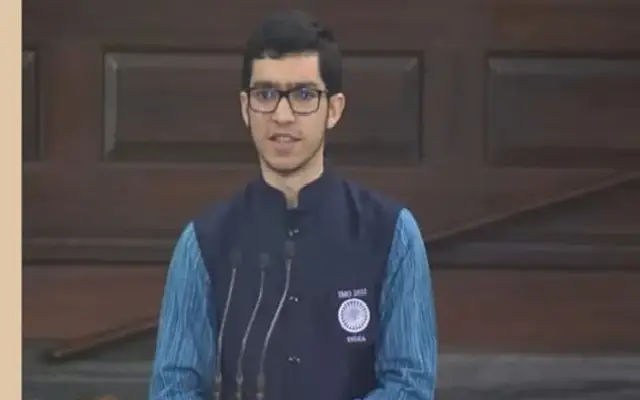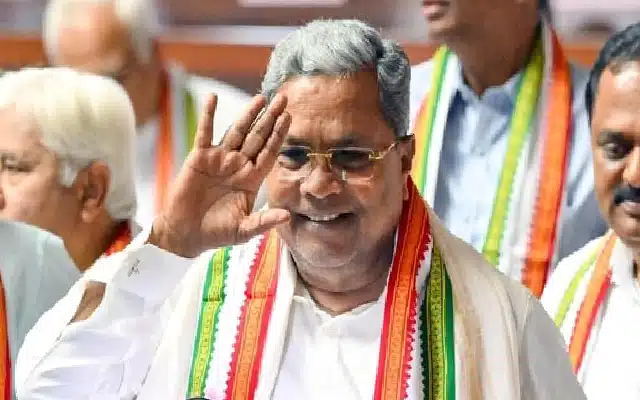 The draft New Education Policy (NEP) is a huge document running over 480 pages. It separately deals with School Education and Higher Education. This article gives a summary of the changes that are sought in the two sectors.
The draft New Education Policy (NEP) is a huge document running over 480 pages. It separately deals with School Education and Higher Education. This article gives a summary of the changes that are sought in the two sectors.
School Education
The policy envisages taking into account the gradual cognitive growth of the students. It recognizes that learning involves a gradual movement from observation, wonderment etc. (perceptual) to names, symbols, representation etc. (conceptual). The document envisions teachers of high quality who are appropriately trained. To this end, the document suggests that B.Ed would be strengthened by making it a four-year programme conducted only in full-fledged universities that have a multidisciplinary orientation.
Corresponding to the gradual cognitive development of children, schooling would start with Early Childhood Care and Education (ECCE). This will be the Foundational stage of education consisting of five years that will be divided into two years of pre-primary and three years from Grades 1 to 3. Typically, the Foundational Stage would begin at the age of three and end at the age of eight. The policy recognizes the individual differences in the cognitive development of children at this stage and therefore, formal structured learning will be absent during these five years.
The second stage would be Preparatory and will consist of Grades 3 to 5 (roughly ages 9 to 11) during which curricular structure and standardization will slowly be introduced. The third stage will be Middle School consisting of Grades 6 to 8, roughly corresponding to ages 12 to 14. The policy takes into account the fact that only after year 11 or so do children start having the capacity for abstraction (p:74). Finally, between 15 to 18 years would be Grades 9 to 12 that will be multidisciplinary orientation with exit options. This phase would also prepare the student for under-graduate programme including “early introduction to Liberal Arts education” (p: 28).
The policy seeks to bring all Anganwadis under the comprehensive school system while appreciating the need to do much more at this stage with not just education but nutrition and community orientation. During the early stages, much attention would be given to learning languages and avoid this stage becoming downward extensions of primary school (wrongly so with high conceptual bias rather than be experiential) as has happened in private schools with merely a high teacher-student ratio etc. which in itself is inadequate. The early ‘conceptualization push’ makes the students “lose” their childhood and rob them of the capacity to simply experience at the cost of conceptual judgment etc. The draft policy correspondingly recognizes the need for teachers with new sensitivities and consciousness, which can be achieved only through better teachers’ training, resources, institutional and regulatory support etc. The problems of the fragmentation of schools is recognized in the document and the entire school education system is sought to be converted to school complexes with pre-primary to 12th grade being housed within them.
With regards to the curriculum and pedagogy the objective of the NEP states that “Curriculum and pedagogy are transformed by 2022 in order to minimize rote learning and encourage holistic development and 21st century skills such as critical thinking, creativity, scientific temper, communication, collaboration, multilingualism, problem solving, ethics, social responsibility, and digital literacy” (p: 73). Free and compulsory education till the 12th grade with lateral exit options is part of the policy. ECCE, referred to earlier, would take into account suitable pedagogies at different stages (like more of play-based experiential learning at early stages with least formalization). Overall, the “content” load is being reduced. There would be policy support for more choice of courses, multilingualism, initial training in home language and bilingualism in teaching-learning, exposure to classical languages like Sanskrit, Pali, Prakrit, Persian in addition to the country’s regional classical languages. The policy envisages a three-language formula with proficiency in at least one language at the literature level.
The NEP aims to create a scientific temper in children, critical thinking, appreciation of arts and humanities and languages, music, creativity and innovation, development of constitutional values, development of personal freedom and responsibility, safety training, socio-emotional learning and knowledge of India. There would be no premature thrusting of specialization.
The policy also touches on the assessment of students towards achieving student development. This would mean moving away from rote memorization and encouragement of higher order skills such as logical reasoning, critical thinking, application orientation and appreciation of the local and Indian ethos. The students will have the opportunity to take board exams in a larger number of subjects in a flexible manner in subjects of students’ choice, rather than packaged fixed subjects all at one time. This will make possible a certain extent of individualized curricula with assessment being more formative in nature. The principles for university entrance too will undergo changes with the National Testing Agency tasked with the design of high quality common modular examinations that will be held several times in a year. Along with this, the students will be encouraged to pursue singular interest and talents that they already may possess.
Most of these changes would mean a cultural shift in the schools from one of top-down rule orientation to sensitivity to student needs and potential; a cognitive shift away from standardized mass-production orientation to personalized local-level innovations; and intellectual shift from textbook orthodoxy to contextually nuanced knowledge; emotional shift from master-student relationship to one of mutual respect, empathy and appreciation. To achieve all these at the implementation level would require much effort with all the stakeholders concerned.
The policy also deals with teacher education and related issues of recruitment, deployment, continuous professional development, career management, education of the trainers etc. Similarly, there are issues of enrollment, fairness in access to education, resources, governance issues, accreditation etc. that are touched upon by the NEP.
Higher Education
The NEP recognizes the current problems of Higher Education as fragmentation, lack of access in many areas that are socio-economically disadvantaged, too early streaming of students to specialization, lack of faculty autonomy and dysfunctional regulatory system. The suggested responses are movement to large multidisciplinary universities with upwards of 5000 students, liberal undergraduate education, faculty and institutional autonomy, independent boards for universities, revamping of curriculum, assessment and students support, merit-based appointments and performance-based career management for academics, and establishment of a National Research Foundation.
There would be “light but tight regulation” with only one regulator of Higher Education including professional education. The policy suggests voluntary accreditation on the basis of minimalistic parameters (like financial probity) that will be rigorously enforced. “The functions of funding, standard setting, accreditation, and regulation will be separated and will be conducted by independent bodies, eliminating concentration of power and conflicts of interest. Public and private institutions will be treated on par by the regulatory regime. Commercialization of education will be stopped and philanthropic efforts will be highly encouraged.” (p: 210).
The entire university affiliation system will be removed gradually so that local-level autonomy and innovations are possible. The colleges that are not contiguous with the university will either be constituent colleges of a university or will have to be spun out as stand-alone entities. Such entities will have the right to issue degrees. Over a period of time, such colleges with research and multidisciplinarity may eventually become universities themselves.
The NEP envisages conversion of all Higher Education Institutions (HEIs) into three types: Types 1, 2 and 3. All the three types will be allowed to grant their own degrees. Type 1 HEIs would be large multidisciplinary universities where most of the research in the country would happen. Type 2 universities too would be large and multidisciplinary but predominantly teaching universities. Type 3 will be stand-alone colleges. There would be a large number of stand-alone college hitherto affiliated to the local universities that will become Type 3 HEIs. The smaller institutions could remain stand-alone entities with own degree-granting status or may be constituent colleges of a university. The policy expects a gradual movement to this over a span of time reaching a complete makeover by the year 2030.
The NEP aims to promote liberal education at the undergraduate level to generate more imagination in the students and ensure their more holistic development. It notes that by liberal what is meant is “liberal notion of the arts. The very idea that all branches of creative human endeavour (including mathematics and science) should be considered ‘arts’ indeed has a distinctly Indian origin” (p: 223). It refers to early Indian literature where there is mention of 64 kalas, all of which have to be mastered to be referred to as a “truly educated person”, later in the middle periods to be expanded to more kalas. In more modern terms, the policy notes that there is a need to integrate humanities with STEM education. The policy notes that future jobs would require not just technical skills but liberal arts education to generate flexibility and contextual appreciation. The policy suggests four-year programmes in Bachelor of Liberal Arts (BLA) or Bachelor of Liberal Education (BLE) with broad-based liberal education and specialization/research. The current three-year programmes of B.A, BSc etc. will continue. In the case of BLA/BLE programmes the curricula would include practical engagement with the world, focus on language, literature, arts, sports, and music. The languages may be Indian as well as foreign. These programmes will also have a strong emphasis on professional practical education and vocational subjects. The policy suggests having at least one high quality Bachelor of Liberal Arts programme in every district of the country. In addition, there could be new multidisciplinary education and research universities and/or Indian Institute of Liberal Arts (like IITs and IIMs). The programmes from these efforts will have an impact on other programmes in the professional fields as well.
Assessment of students for development and not judgment, Choice Based Credit System, meaningful social engagement, facilities for arts and sports, the involvement of students in institutional processes etc. are suggested here. Very fine but indefensible measurement of programmes/universities too narrowly by existing systems will be eliminated by 2030; for instance, the NAAC accreditation now is on a 1 to 4 scale with a least count of 0.01. The NEP suggests that it would be a binary “Yes or No”. If these are accepted with appropriate legislation, the ranking of universities (Like NIRF) can also be expected to be deemed unscientific and too reductionistic. Open and Distance Learning (ODL) to promote life-long learning and internationalization of Indian Higher Education are issues that the policy deals with.
Issues of autonomy of faculty, freeing academics from election duty and excessive administrative tasks, inadequate career management of faculty, lack of educational leadership today, meritocracy, teacher education in an environment of multi-disciplinarity, development of faculty capacity, putting faculty back into the heart of HE learning and teaching, the right faculty recruitment, faculty disposition for public service, openness that “requires intellectual fervent in a nurturing culture” (p: 309), governance of HEI by independent boards with “full autonomy – academic, administrative and financial – with financial certainty and backing” (312) are all aspects touched upon by the NEP.
The policy suggests setting up of a National Research Foundation (NRF) with “competitive peer-reviewed funding, mentoring and facilitation” (p:265). The foundation will have an annual grant of Rs 20,000 crores or 0.1 percent of the GDP with autonomy, with its own board of academicians and professionals to decide on its own finances, governance and statutes. Every year, if there is any unspent money, the same will be held in a corpus that will be carried forward with investment is a steady risk-free investment. The organization of such a foundation would include regional councils and professional management, the bare details of which are provided in the NEP report.
As regards professional education, the policy notes that setting up separate institutions for agriculture, law, health care has in the past “…resulted in deepening the isolation further. Although the effort in professional education has been focused mainly on students ready for ‘jobs’, the outcomes, in terms of employability, leave a lot to be desired… Professional education must also be separated from professional practice.” (p: 293). For the uninitiated, this may sound strange. But when those with a keen eye towards professional education and professional practice consider this lack of separation, the pieces of the puzzle start falling in place. This is a form of centralization of power. The staticity of professional practice in nearly every professional domain, suspicion towards healthy questioning of current practices and absence of nuanced healthy changes – coming as they normally would from relevant research – can all be greatly attributed to this form of centralization. The policy recommends separate Professional Standard Setting Boards (PSSB) that would set standards for each of the professions separately and will “become lighthouses of intellectual leadership for their respective professions and so must be staffed as such.” (p: 330). The existing professional bodies such as Bar Council of India (BCI), proposed National Medical Commission or NMC etc. will all become PSSBs. The regulatory function will be discharged by the proposed National Higher Education Regulatory Authority (NHERA). There would be separate independent institutions of accreditation (NAAC) and funding (Higher Education Grants Council or HEGC). All these institutions will be harmonized under the Rashtriya Shiksha Aayog (RSA)/National Education Commission (NEC) headed by the Prime Minister himself/herself.
So far as individual HEIs are concerned (whether of Type 1, 2, or 3) the policy states that the objective is to create, “Independent, self-governed higher education institutions with capable and ethical leadership… ” (p: 309). It further notes that “Institutions in India that have been given autonomy with strong self-governance and have had good leadership have grown into world-class institutions” (p: 310). “Institutional governance will be based on full autonomy – academic, administrative and financial – for all higher education institutions with financial certainty and backing” (p: 312). The regulation further states that “private and public institutions will be treated on par by the regulatory regime” (p:334).
Conclusion
The New Revised Education Policy, if adopted and implemented in spirit and substance will have a far-reaching impact on the country. It has the potential to release the spirit of inquiry, mutuality, ethical autonomous behaviour of students, faculty and other stakeholders. Self-regulation, autonomy, collaboration, creativity, innovation, community orientation, trust in the deepest Indian spirit are all important components of this policy. Structural separation of responsibilities at the institutional and inter-institutional levels to remove the tendency for self-serving behaviour by those in power and avoidance of conflicts of interest are key aspects of this policy.
All academicians and educational policy makers in India should discuss, debate, agree and disagree and reflect on the document in the true spirit of Indian argumentation so that finally, everyone understands and plays a key role in the personal, institutional, social and ecological transformation that genuine education can unleash.
About the author:
K Sankaran, BTech Hons (IIT Kgp), PGDM (IIMB), Ph.D. (Kent State)
Director
Justice KS Hegde Institute of Management
Nitte – 574110, Karnataka, India
















